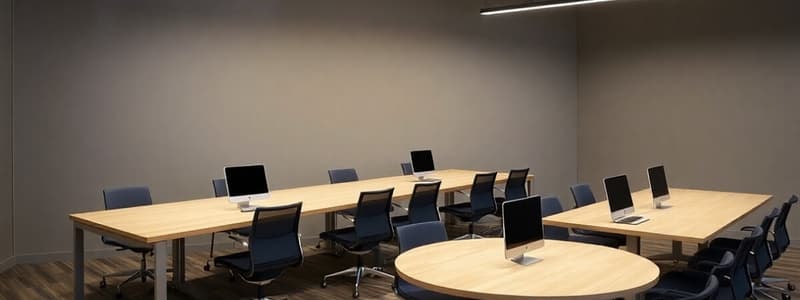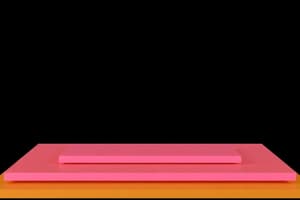Podcast
Questions and Answers
What advantage does a layered table provide in terms of user positioning?
What advantage does a layered table provide in terms of user positioning?
- Requires users to remain seated at all times
- Allows users to choose to sit or stand (correct)
- Forces users to use wheels for mobility
- Limits users to sitting only
How do layered tables promote agility in workspace design?
How do layered tables promote agility in workspace design?
- By eliminating chaotic movement while maintaining flexibility (correct)
- By incorporating wheels for easy movement
- By restricting user movement to specific areas only
- By providing a rigid structure that reduces flexibility
What does the elevated surface of a layered table facilitate?
What does the elevated surface of a layered table facilitate?
- Only formal meetings with fixed seating
- Eliminating the need for any type of seating
- Casual touchdowns and informal gatherings (correct)
- Creating a permanent work environment
Which of the following is NOT a characteristic of layered tables?
Which of the following is NOT a characteristic of layered tables?
Which best describes the function of layered tables in modern workspaces?
Which best describes the function of layered tables in modern workspaces?
Flashcards
Layered tables
Layered tables
A single table designed to serve multiple purposes, such as sitting, standing, and working.
Flexibility in posture
Flexibility in posture
Allows users to choose their preferred posture, whether sitting or standing.
Elevated surface
Elevated surface
Provides a stable surface for casual interactions or brief work sessions.
Agile without wheels
Agile without wheels
Signup and view all the flashcards
Casual touchdowns
Casual touchdowns
Signup and view all the flashcards
Study Notes
Single Table Accommodates Multiple Needs
- Layered tables allow users to sit or stand, providing flexibility
- This accommodates diverse user preferences and needs in a single space
- Design supports a wider range of users, promoting inclusivity
Increased Permissions
- Layered tables provide the option to sit or stand
- This enhances inclusivity and usability for a greater range of individuals
Agile Design
- The design of layered tables is agile, reducing disruption and wasted space
- The design is nimble, without the complexities of mobile furniture wheels
Elevated Surface
- The elevated surface of the layered tables is designed for casual touchdown activity
- This allows for spontaneous, informal work or relaxation in a structured environment
- The heightened surface promotes casual interaction and collaboration on a flexible platform
Studying That Suits You
Use AI to generate personalized quizzes and flashcards to suit your learning preferences.




